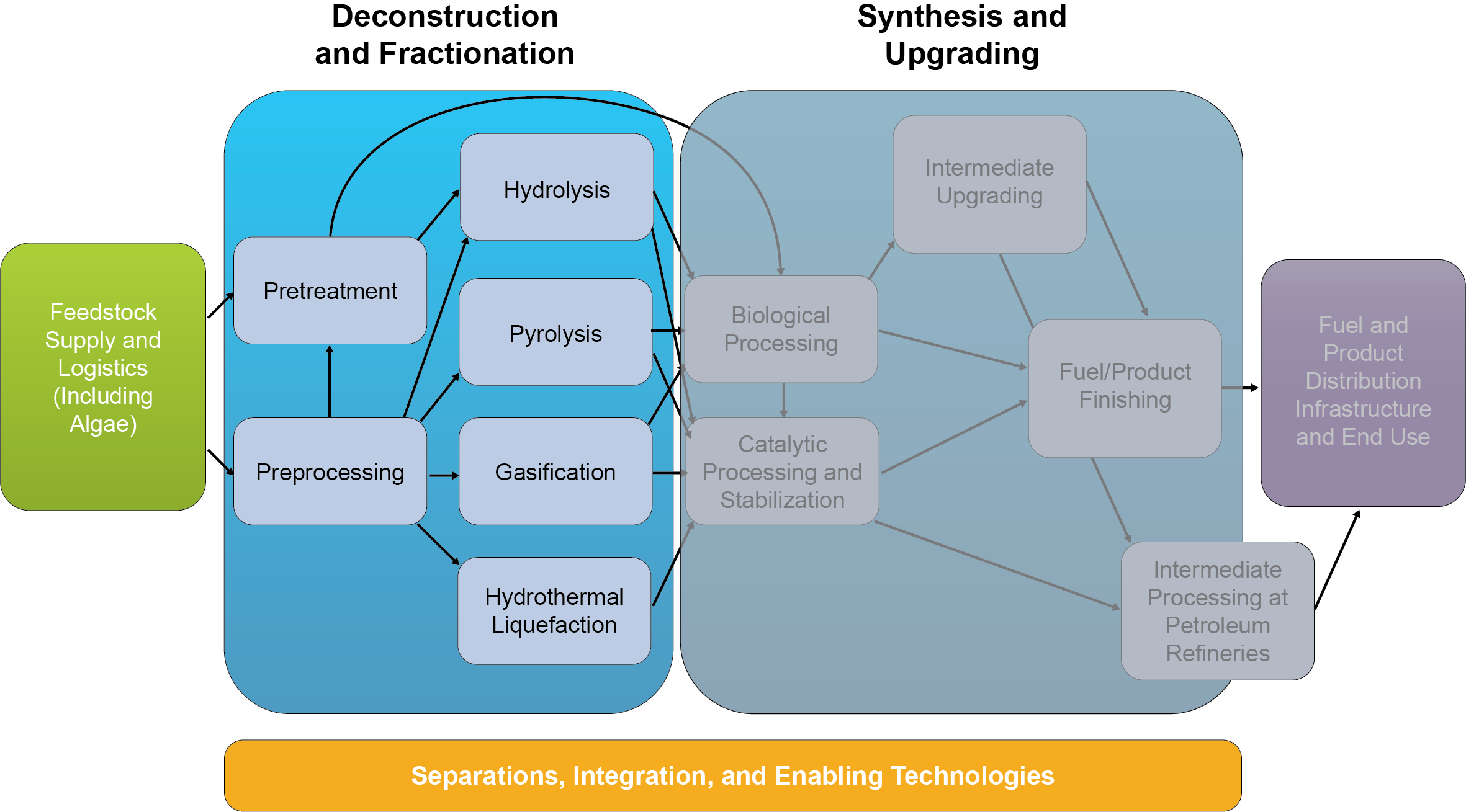Very large refinery-scale gasification technologies have been successfully deployed for about 70-years, beginning after WWII, when petroleum refining emerged as the dominant energy production technology. Coal gasification methods were dominant before that time, going back to the 1850’s when town-gas used for street-lighting first emerged. But let’s not go back that far in time. The most recent history of gasification development, intended for use with alternative fuels, including biomass and municipal wastes materials, has unfortunately been based on the selection of technologies with fundamental limitations that have prevented economic success. Yes, there have been many technical successes; a cigarette is an example of a very successful gasifier, but it doesn’t scale-up. Likewise, refinery-scale gasification methods do not necessarily scale-down and are not ideally suited for the “alternative fuels,” which have different properties when compared to refinery residues, such as petroleum coke, for example.
In the search for solutions, “new” gasification methods have been attempted. However, these “new” gasification technologies, mostly based on the adaptation and modification of the old proven methods, are not able to compete with coal and petroleum derived energy sources. Two examples will suffice: comparing “indirect” gasification with “direct” partial-oxidation methods.
Refineries use Fluid Catalytic Cracking (FCC) technologies as a key technology to increase liquid yields. The largest structure in any refinery is the giant FCC unit located somewhere in the center. Almost all the indirectly heated gasification methods are based on the FCC concept; that is, circulating bed materials between two rector, one side burning carbon residues to produce heat, and the other side using that heat to crack larger organic molecules into smaller ones (liquids and gases.)
However, there is a fundamental problem with this approach: when applied to biomass, at least 40-pounds of bed material (serving as the heat-carrier) must be circulated to crack 1-pound of biomass. 40:1 is the minimum ratio; 50:1 is more typically required. That’s a lot sand or catalyst, as the case may be. The problem with circulating all that bed material is cost: it takes work to continuously fight against gravity. The bigger problem is erosion; the refractory is eroded at every point where bed materials intersect the containment vessel; moreover, the bed-material is comminuted, size-reduced, creating mineral residues. The problem is not an insignificant. For example, the well-known Battelle Columbus Laborites (BCL) gasifier, developed over many years with funding from NREL and other, generated 3-time more mineral residues from erosion of the bed material than from the mineral-ash in biomass; all this adds to the material handling costs — transporting, storing, feeding, and removing, the mineral residues that are necessarily combined with the carbon-char residues. All the indirectly-heat fluid-bed gasifiers suffer from this fundamental 50:1 limitation — the requirement to circulate so much bed material. The “indirect” gasifiers always look very good on paper. ECN’s MILENA, Gothenburg’s GoBiGas, Gusssing’s-FICFB, BCL, TCG, and others. I was seduced by numbers: the attraction of eliminating oxygen from the process, in an effort to reduce the cost and complexity. All the indirectly heated gasification technologies work, but the promises of competitive advantages over partial-oxidation methods are false.
There are ways to overcome the inherent limitations of the “indirect” gasification methods. Renown fluidization expert, Dr. Diazo Kunii, author of Fluidization Engineering, developed a fast-fluidization method that employs an “over-flow” circulation method that virtually eliminates the refractory-erosion and bed-material-comminution problems. Taylor Energy licensed this technology in 2001; the PYROX process was well-proven in Japan with three parallel trains, each gasifying 150-tonne/day of coarsely shredded MSW, operating successfully for 7-years during the 1970’s. With over 1000-pages of design-details provide by Dr. Kunii, Taylor Energy developed and demonstrated the technology at pilot-scale feeding 5-ton/day, circa 2007-2009.
This technology works. Taylor Energy still owns the detailed designs, and we are able to deploy the PYROX indirectly heated gasification technology at will, which process is superior to the indirectly-heated biomass or waste gasification methods presently in development today. However, after testing the best, we still have abandoned the “indirect” gasification approach, because of the inherent simplicity and cost advantages of “direct” partial-oxidation methods. Gasification technology-development is a very competitive field. Just because a technology “works” does not mean that it has a commercial future.
The “direct” partial-oxidation type gasification systems also have inherent problems that must be overcome. GTI’s gasification technology is one of the best on the planet; the IP has landed in the hands of GE through SES and is being commercialized in China for gasification of brown-coal with high mineral content, along with 85 other large gasifiers already in service there. However, the technology is thought not to scale-down (economically) below about 1000-ton/day of throughput, which may be true relative to their particular methodology and supply-chain.
The GTI gasifier was developed for biomass applications as RENUGAS. However, like most-all of the large POX-type gasification systems, the GTI gasifier started life as a coal gasifier, and the owners and developers use major EPC firms (Bechtel, Parsons, Black & Veatch, etc.) to deploy the technology, adding costs and complexities that are not sustainable for smaller-scale applications, certainly not less than 1000-tonne/day.
For example, these POX-systems employ complex gas distribution manifolds to inject oxygen and steam into the reactor, which are constructed of costly alloy steel, or ceramic materials in new embodiments. Corrosion and erosion of the oxygen/steam distribution manifolds can cause failures leading to explosions; any time oxygen is mixed with fuel in a high-temperature zone under reducing conditions — it’s a tricky operation. At the point where O2 is introduced (via alloy nozzles) the thermo-chemical environment fluctuates between reducing and oxidizing, which causes corrosion that is very difficult to avoid. Ceramic materials have been used to replace alloy steel nozzles in recent years, which solves the corrosion problem in great measure, but the material costs and complexity is thereby increased.
Refinery-scale partial-oxidation systems are controlled by the major petroleum refiners: Shell and Exxon, for example, have some of the best gasification systems deployed throughout the world. They use well characterized energy feedstocks; low-grade coal and pet-coke. If Shell or Exxon or GE want to design a partial-oxidation unit applicable to biomass or MSW, they certainly can achieve technical success. However, there has been little interest to date, because the market has not been large enough thus far, and the approach they would use, working with the A-level EPC firms, cannot be down-sized for community scale applications.
Though the years, I have gone through the exercise multiple times, employing the giant EPC firms to perform the engineering, which cost is about $1-million just for preliminary engineering. If you want to build a refinery or a dam or an airport, you want Bechtel or Black & Veatch. For refinery scale projects, they have the thermal processing experience, and they can provide the performance guarantees needed by the financial sources. It’s a difficult problem to overcome, because the over-all system-costs tend to increase by three or four time when a major EPC firm is engaged to perform the engineering, procurement, and construction activities.
There is nothing wrong with “direct” partial-oxidation type gasification, except that the technology is too costly when deployed using tradition supply chains. What happens when Bechtel calls their supplier for the price/cost of a scrubber? They get the Bechtel price. Enerkem is in this category. They have selected a good partial-oxidation technology and have executed project(s) successfully, but at high-cost.
The solution is to design much less complex partial-oxidation type gasification systems that do not require the participation of an A-level EPC firm to perform the engineering. Construction of the key components has to be performed by a team with sufficient expertise to manage the key subcontract work internally; for example, when designing and fabricating a gasification vessel, the actual cost for steel and refractory is X; when employing a major EPC firm to manage the work, the value-added cost becomes 10-X. Whereas, a C-level EPC firm can be used to perform site-engineering, design the utility interconnects, foundations, and support structures, the gasification IP must be owned and managed by the developer, otherwise the total system costs spiral out of sight.
A special word about ThermoChem Recovery International, Inc. (TRI); their gasification technology is in a unique category: an indirectly heated gasifier, using internal heat-exchangers composed of multiple tube-bundles heated by pulse-burners said to increase heat-transfer to the fluid bed. This is a technology that has been well-executed to achieve successful performance, considering that the inherent design necessitates a relatively costly embodiment.
Fulcrum Bioenergy has been an early adopter of the TRI gasification tech for MSW gasification, based on TRI’s success gasifying black liquor in the pulp & paper industry. The Fulcrum executives were smart to get the waste hauler (i.e., the garbage companies) as early partners, and those partnerships propelled them into a position to obtain federal funding. However, the waste management companies have been notoriously bad at selecting good gasification technology, from BCL to TRI. The problem is that TRI is fundamentally a “devolatilization method” that makes a very costly “fuel-gas” product as a result of all that high-tech heat-exchange. To make actual synthesis-gases (syngas) for an FT-catalyst requires another major processing stage, a high-temperature reforming process. I am continually impressed by TRI’s successful evolution and their execution of various projects that go beyond the obvious constraints of a technology that uses costly metal alloy tube-bundles immersed in a deep-bubbling-bed fluidized with steam. I know the technology well, and would welcome a heads-up cost and performance competition, when we finally achieve their level of funding.



